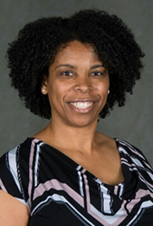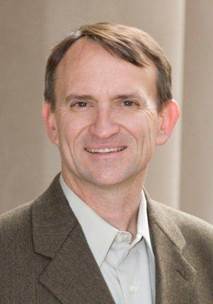|
|
|
|
|
|
International
Conference on Statistical Distributions and Applications Oct. 10-12, 2019, at Eberhard Conference
Center, Grand Rapids, MI, USA |
|
|
(Expired) |
||||||||||
|
Conference Keynote Speakers |
||||||||||
|
David Banks
|
Dr. David Banks is currently the
Director of the Statistical and Applied Mathematical Sciences Institute, and
a professor in the Dept. of Statistical Science at Duke University. He
has held previous positions at UC Berkeley, the University of Cambridge,
Carnegie Mellon, the National Institute of Standards and Technology, the US
Dept. of Transportation, and the FDA. He obtained his PhD in 1984 at
Virginia Tech, and has served as editor of JASA and Statistics and Public
Policy. He is interested in dynamic text networks, risk analysis,
agent-based models, biosurveillance, and human rights data. |
Title:
Adversarial Risk Analysis Abstract: Adversarial Risk Analysis (ARA)
is a Bayesian alternative to classical game theory. Rooted in decision
theory, one builds a model for the decision-making of one's opponent, placing
subjective distributions over all unknown quantities. Then one chooses
the action that maximizes expected utility. This approach aligns with
some perspectives in modern behavioral economics, and enables principled
analysis of novel problems, such as a multiparty auction in which there is no
common knowledge and different bidders have different opinions about each
other. |
||||||||
|
Grace Yi
|
Dr. Grace Y. Yi is a Professor of
Statistics and University Research Chair at the University of Waterloo. She
is a Fellow of the American Statistical Association and an Elected Member of
the International Statistical Institute. She is the Editor-in-Chief of The
Canadian Journal of Statistics (2016-2018). She was President of the
Biostatistics Section of The Statistical Society of Canada in 2016, and the
Founder and Chair of the first chapter (Canada Chapter) of The International
Chinese Statistical Association. She serves as an Associate Editor for a
number of statistical journals. Professor Yi is broadly interested in various
areas concerning statistical learning and applications. She published a wide
range of research papers in reputable statistical journals, authored a
research monograph and co-edited the book Advanced
Statistical Methods in Data Science, both published by Springer. Professor Yi was the 2010 winner
of the CRM-SSC Prize, an honor awarded in recognition of a statistical
scientist’s professional accomplishments in research during the first 15
years after having received a doctorate. She was a recipient of the
prestigious University Faculty Award granted by the Natural Sciences and
Engineering Research Council of Canada (NSERC). |
Title:
Making Sense of Noisy Data: Some Issues and
Discussions Abstract: Thanks to the advancement of modern technology in acquiring data,
massive data with diverse features and big volume are becoming more
accessible than ever. The impact of big data is significant. While the
abundant volume of data presents great opportunities for researchers to
extract useful information for new knowledge gain and sensible decision
making, big data present great challenges. A very important, sometimes
overlooked challenge is the quality and provenance of the data. Big data are
not automatically useful; big data are often raw and involve considerable
noise. Typically, the challenges presented by noisy data with measurement
error, missing observations and high dimensionality are particularly
intriguing. Noisy data with these features arise ubiquitously from various
fields including health sciences, epidemiological studies, environmental
studies, survey research, economics, and so on. In this talk, I will discuss
the issues induced from noisy data and how these features may challenge
inferential procedures. |
||||||||
|
Scott
Vander Wiel
|
Dr. Scott
Vander Wiel is a fellow of the American Statistical Association,
conducting statistics research at Los Alamos National Laboratory since
2005 and previously at Bell Laboratories since 1991. He
collaborates with engineers and scientists to analyze data and develop
statistical methods for problems in diverse areas such as radio
astronomy, malware detection, nuclear forensics, power grid uncertainty,
rare event estimation, anomaly detection, and numerical
optimization. Scott holds patents on methods for network
traffic modeling and for incremental quantile estimation. He won the ASA
prize for Outstanding Statistical Applications and the ASQ Frank
Wilcoxon prize for the Best Practical Application for a 2002 paper on
modeling bandwidth in optical fiber. At LANL he has focused on
uncertainty modeling for electric power, streaming radio astronomy
analysis, weapons reliability modeling, high explosive surveillance and
cyber security. Scott earned a Ph.D. in Statistics from Iowa State
University. |
Title:
Fitting Stress-Strain Fields in Polycrystalline Materials—Statistical Art and
Science Abstract:
We discuss statistical art and science involved in collaborating to build
models for polycrystalline materials using large simulation data sets with
the ultimate objective of connecting statistical fluctuations to failure
propensity. Quantitative understanding of shock-failure mechanisms is needed
to assure reliable performance in extreme environments. I will describe three
statistical representations of stress-strain fields in simulated
Tantalum. First, a Gauss-Markov random
field on ~1M computational elements is designed to capture stress effects
that tend to become more extreme near grain boundaries. Next, two different regression models are
fit to reduced data sets corresponding to grain boundary centroids. Orientations of crystal lattices are used
as predictors in these models and present special challenges because the
point group structure of crystal orientations imposes symmetries on the
regression problem. One model
regresses on (hyper-) spherical harmonic bases. The other is a Gaussian process fit utilizing
an orientation distance metric. |
||||||||
|
Patrick Wolfe
|
Dr.
Patrick Wolfe is the Frederick L. Hovde Dean of Science
and Miller Family Professor of Statistics & Computer Science at the
Purdue University. He
received his Ph.D. from the University of Cambridge as U.S. National Science
Foundation Graduate Research Fellow. In 2012, he took up an Established
Career Fellowship in the Mathematical Sciences at University College London
(UCL), where he also served as a Royal Society Research Fellow and as
founding Executive Director of UCL’s Big Data Institute. Dr. Wolfe is
currently Chair, IEEE SPS Big Data Special Interest Group and serves on the
steering committee of the IEEE SPS Data Science Initiative, as well as
Co-Chair, Data Science Section of the Institute for Mathematical Statistics.
Dr. Wolfe has received awards for his research from a number of international
bodies, including the Royal Society, the Acoustical Society of America, and
the IEEE. He is active in the global mathematics, statistics, and physical
sciences communities. He was an organizer and Simons Foundation Fellow at the
Isaac Newton Institute for Mathematical Sciences 2016 semester research
program on Theoretical Foundations for Statistical Network Analysis. |
Title: Statistical
Distributions and Network Testing Abstract: How do we draw sound and
defensible conclusions from big data, for example in comparing two sets of
observations, or evaluating goodness of model fit? In this talk I will
discuss the current state of the art in one area of particular interest: big
network data. Progress in this area includes the development of new
large-sample theory that helps us to view and interpret networks as
statistical data objects, along with the transformation of this theory into
new statistical methods to model and draw inferences from network data in the
real world. The insights that result from connecting theory to practice also
feed back into pure mathematics and theoretical computer science, prompting
new questions at the interface of combinatorics,
analysis, probability, and algorithms. |
||||||||
|
Conference Plenary Speakers |
||||||||||
|
Susmita
Datta
|
Dr. Susmita Datta is Professor at
University of Florida (UF), Department of Biostatistics. She is the
Co-Director of the Biostatistics, Epidemiology and Research Design Program
(BERD) of UF Clinical and Translational Science Institute. Dr. Datta is widely (>100) published in peer reviewed
journals. Her work has been continuously funded by the National Science
Foundation and the National Institutes of Health. She is a fellow of the
American Statistical Association (ASA), an elected member of the
International Statistical Institute (ISI), and fellow of the American
Association for the Advancement of Science (AAAS). Her research area includes
bioinformatics, genomics, proteomics, metabolomics, lipidomics,
clustering and classification techniques, infectious disease modeling,
statistical issues in population biology, systems biology, survival analysis,
multi-state models and big data analytics. She has recently published a book
on “Statistical Analysis of Proteomics, Metabolomics, and Lipidomics
Data Using Mass Spectrometry” by Springer. Professor
Datta is enthusiastic in promoting women in STEM
fields and has served as President of Caucus for Women in Statistics (CWS)
and is presently appointed to the Committee of Women in Statistics of ASA
(COWIS). She is the founding executive committee member of the Women in
Statistics and Data Science conference (WSDS). |
Title: Advances and Challenges
in Single Cell RNA-Seq Analysis Abstract: Traditionally, transcriptomic studies have examined transcript
abundance measurements averaged over bulk populations of thousands (or even
millions) of cells. While these bulk RNA-sequencing (RNA-Seq)
measurements have been valuable in countless studies, they often conceal
cell-specific heterogeneity in expression signals that may be paramount to
new biological findings. Fortunately, with single cell RNA-sequencing (scRNA-Seq), transcriptome data from individual cells are
now accessible, providing opportunities to investigate functional states of
cells, identify rare cell populations and uncover diverse gene expression
patterns in cell populations that seem homogeneous. However, there are
challenges in analyzing such scRNA-Seq data.
Amongst many challenges the most significant are the bimodal or multimodal
distribution, sparsity and tremendous heterogeneity in the data.
Consequently, we will describe potential ways of statistical modeling of such
data, finding differentially expressed genes and possible ways of
constructing gene-gene interaction network using this data. Moreover, we will compare the performance
of our modeling and differential analysis with respect to some other existing
methods. |
||||||||
|
Kimberly
Sellers
|
Kimberly Sellers, Ph.D. is an Associate Professor of
Mathematics and Statistics, specializing in Statistics at Georgetown
University in Washington, DC; and a Principal Researcher with the Center for
Statistical Research and Methodology Division of the U.S. Census Bureau.
Prof. Sellers held previous faculty positions at Carnegie Mellon University
as a Visiting Assistant Professor of Statistics, and the University of
Pennsylvania School of Medicine as an Assistant Professor of Biostatistics
and Senior Scholar at the Center for Clinical Epidemiology and Biostatistics
before her return to the DC area. Her research areas of interest and
expertise center on generalized statistical methods involving count data that
contain data dispersion for which she became an Elected Member of the
International Statistical Institute in 2018. Meanwhile, Sellers is an active
contributor to efforts to diversify the fields of mathematical and
statistical sciences, both with respect to gender and race/ethnicity. She was
the 2017-2018 Chairperson for the American Statistical Association’s
Committee on Women in Statistics, and is an Advisory Board member for the
Black Doctoral Network. |
Title: Flexible Regression Models for Dispersed Count Data Abstract: Poisson regression is a popular tool for modeling
count data and is applied in a vast array of applications across disciplines.
Real data, however, are often over- or under-dispersed relative to the
Poisson model, and thus are not conducive to Poisson regression. This talk
presents a regression model based on the Conway-Maxwell-Poisson (COM-Poisson
or CMP) distribution, which serves as a flexible alternative that contains
both the Poisson and logistic regressions as special cases, and can
handle other count data with a range of dispersion levels. We discuss
model estimation, inference, diagnostics etc. for both the standard CMP
regression and its zero-inflated analog, and introduce the associated R
package, COMPoissonReg, developed to aid analysts
with such data. |
||||||||
|
John
Preisser
|
Dr.
John S. Preisser is Professor of Biostatistics in the Gillings School of Global Public Health at the University
of North Carolina (UNC) at Chapel Hill and a Fellow of the American
Statistical Association. He is also Deputy Director of Biostatistics,
Epidemiology and Research Design in the North Carolina Translational &
Clinical Sciences Institute. His primary interests include categorical data
analysis, cluster randomized trials, correlated binary data, estimating
equations for marginal mean regression models, longitudinal data,
marginalized mixture regression models and statistical methods for handling
missing data. He teaches a course in Categorical Data Analysis to
biostatistics doctoral students at UNC and has over 50 co-authored papers in
biostatistics and statistics journals. Professor Preisser is also interested in the
innovative application and dissemination of state-of-the-art statistical
methods in diverse areas of human health and welfare including clinical
trials, dentistry, epidemiology, health services research, and the long-term
care of the elderly in nursing homes and other institutionalized settings. For over twenty years, he has contributed to
the design and analysis of scores of multi-disciplinary health sciences
studies that have been published in over 150 research articles. |
Title: Estimating the zero cell of multivariate
binary data from partially-sampled clusters Abstract: Due
to logistical or costs constraints, correlated binary outcomes may be
recorded as partially-sampled clusters where some observations within
clusters are intentionally missing. In this context, we discuss estimation of
the cell probability for the cross-classification of zeros in a complete
table of multivariate binary data. The beta-binomial model of within-cluster
exchangeability is used to estimate disease prevalence where disease is defined
as the presence of one or more observations (sites) affected with the binary
condition in a complete cluster, -the complement of the zero cell. When the
propensity for the condition varies across sites and pairwise correlations
follow a spatial clustering model, alternative prevalence estimators are
derived under a conditional linear family of multivariate Bernoulli
distributions. Properties of the
estimators are investigated. Estimators of periodontitis prevalence using
random partial-mouth samples in oral epidemiological research are illustrated
including those for alternative definitions of disease, e.g., two or more
sites affected. |
||||||||
|
Paul
Gustafson
|
Dr.
Paul Gustafson is a Professor in the
Department of Statistics at the University of British Columbia. He obtained his Ph.D. in Statistics from
Carnegie Mellon University in 1994.
His current research interests include Bayesian methods, causal
inference, evidence synthesis, measurement error models, and partial
identification. Much of his work is
motivated by epidemiological and public health applications. Professor Gustafson is the author of two
research monographs, in the areas of measurement error models (2004) and
Bayesian inference under partial identification (2015) respectively. He is currently the Special Editor for
Statistical Methods for Epidemiology,
and he is a former Editor-in-Chief of the Canadian
Journal of Statistics. He was the
2008 recipient of the CRM-SSC Prize, and he was named a Fellow of the
American Statistical Association in 2011. |
Title:
Limiting posterior distributions from partially identified models: How do they
arise, and what do they tell us? Abstract:
Understanding what
distributions can arise in various large-sample limiting senses has a rich
statistical tradition. In keeping with
this, one can investigate the large-sample limit of a posterior distribution
when the underlying statistical model is only partially identified. This talk will have three aims. First, we point out that partially
identified models arise quite naturally in many observational study
settings. Second, we describe how the
limiting posterior distribution is determined, for a given partially
identified model and given choice of prior distribution. Third, we consider what the limiting
distribution, through both its support and its shape, tells us about the
scenario at hand. |
||||||||











